Where do you carry your Note 2?
- Thread starter MANdroidd
- Start date
You are using an out of date browser. It may not display this or other websites correctly.
You should upgrade or use an alternative browser.
You should upgrade or use an alternative browser.
Carsten Soerensen
New member
In my suit inner pocket - very handy and comfortable. Also fine in my suit pants. Or on the table while working. When home or outdoor it fits comfotably in most of my army pants pockets. But I don't know what tho do in the summer when this gets too warm. I think I have to buy a summer-phone.
mrsstraty#AC
Well-known member
On my uniform, there is a pocket on my lower left leg that my Note 2 fits perfectly. When I am not in uniform, its in my pocket in purse.
You must be a nurse!!?? Same here!
Sent from my Verizon Galaxy Note 2 using Tapatalk 2.
purwater
Well-known member
I carry mine in the Otterbox Defender in the belt holster during the week at work. I've been using the Otterbox or similar on the belt for years due to dangers of damage at work. On the weekend I have one of the Lloyd Flex cases in smoke from AC. Makes it slimmer for carrying in my pocket.
rankar7
Well-known member
Had mine 4 days. Carried in right front pocket in standard jeans. Sat down in car this morning and cracked the screen.
yeah, have the same problem when i have to crawl into my lambo aventador.
shethinks
Member
Mostly in front pant pocket either (not skinny,womens comfortable) Sometimes in back pocket until I sit down. In purse maybe if carrying one but prefer my baby on my person  She?s currently sporting the purple Qmadix Groove Cover.
She?s currently sporting the purple Qmadix Groove Cover. 
Sent from my SCH-I605 using Tapatalk 2
Sent from my SCH-I605 using Tapatalk 2
skafri
Well-known member
Usually it has its own special place in my purse, but I just put it in the pocket of my sweats when I work out. Also it's in my hand a lot.
Sent from my GT-N7100 using Tapatalk 2
Sent from my GT-N7100 using Tapatalk 2
Terb
Trusted Member
Always in my left front pocket, screen facing in. Still being new to the GN2, in my hand most the time.
Posted via Android Central App
Posted via Android Central App
betty_boop245
Well-known member
Im a bit OCD when it comes to protecting my phones so I get maximum resale value when I sell it on. My note 2 is kept in a flip case, and is either in my handbag or in my hand, or on my desk at work
Posted via Android Central App on my Samsung Galaxy Note 2
Posted via Android Central App on my Samsung Galaxy Note 2
Mom2Ninjas
Well-known member
Connert
Well-known member
I picked up the Seidio Active case and holster the day before my phone arrived. Phone went in to the case right away and that's where it will stay.
I learned the hard way with my first S3. I had it in the same case/holster combo for the first few weeks. But the appeal of the sleek, thin phone lured me into taking it out of the case, which led to a cracked screen due to being dropped from waist high.
Posted via Android Central App
I learned the hard way with my first S3. I had it in the same case/holster combo for the first few weeks. But the appeal of the sleek, thin phone lured me into taking it out of the case, which led to a cracked screen due to being dropped from waist high.
Posted via Android Central App
nancybout
Well-known member
My big bag or my big wristlet lol... being female we can
Sent from my SAMSUNG-SGH-I317 using Tapatalk 2
Sent from my SAMSUNG-SGH-I317 using Tapatalk 2
GadgetgirL76
Well-known member
zmann
Well-known member
With jeans back pocket,, with shorts front pocket,, no case,, just tempered glass protector.
Note 2,,ITS TRUE, SIZE IS EVERYTHING.
Note 2,,ITS TRUE, SIZE IS EVERYTHING.
vpblaze
Well-known member
With a jacket on, I always carry in breast pocket. Jeans, back pocket until I sit down. Shorts, cargo pocket.
Pretty where ever is most comfortable.
If it's not in a pocket it's either in my hand(s) or on the coffee table in front of me... Itching to be in my hand(s)
Posted via Android Central App on my Note 2!
Pretty where ever is most comfortable.
If it's not in a pocket it's either in my hand(s) or on the coffee table in front of me... Itching to be in my hand(s)
Posted via Android Central App on my Note 2!
Somdk
Well-known member
DesElms
Well-known member
Here's what I do...
It's important to not just figure out how to carry the phone, but to do so in a manner that will not expose it to being jostled around in, for example, a purse or briefcase, where it could be damaged by keys and other items; and to also protect the phone from scratches and drops.
Carrying it a pants pocket is always a bad idea. So doing exposes it to being bent and broken when the wearer of said pants sits down. Plus, read on, here, and learn what simple sand in a pocket can do to even Gorilla Glass.
If possible, a thermoplastic polyurethane (TPU) skin/case should be used. The hybrid cases made from multi-layers of polycarbonate and silicone, like the Otterbox Defender...
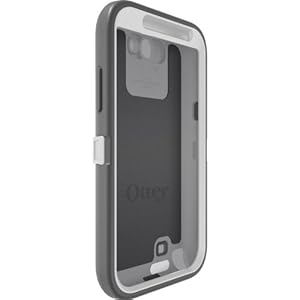
...or such as the Ballistic...

...are very nice, but are also bulky. Additionally, eventually the silicone gets a little floppy, especially that of it that's on either side of the screen where horizontal swiping and hitting the silicone will eventually stretch it out of shape. TPU doesn't suffer from that infirmity. It remains firm but gummy/bouncy, and will always return to its molded shape, no matter how bent, folded or deformed...

...and so, despite its thinness, it will seriously absorb shock in a drop of the phone to the floor. TPU can be any color, including clear; and can be either glossy or matte (or, as in the image above, both).
Cases made of nothing but silicone, and not even supported by rigid polycarbonate, are the worst of all. They're the dull, not-shiny, really soft ones that phone dealers often give away for free. They eventually always stretch-out and get floppy, and don't really provide any drop protection, to speak of. Be careful when purchasing a TPU case because the sellers often don't really know the difference between silicone and TPU, and will sometimes use the terms interchangeably; or, worse, will say that a case is made of "silicone TPU." Yikes!
Regarding a screen protector: People think that because our Note II screens are made of Dow Corning "Gorilla Glass," they're virtually indestructable. Nothing could be further from the truth. Yes, they're tough... very tough. But they're still just glass. Granted, it's very special glass, made using a process called "ion exchange," which results in the glass being generally stronger for its weight and thickness than regular glass; and the process also causes the surface of the glass to have inordinate scratch resistence. Here's how it's made, and why it's different; from the Corning Glass website:
Ion exchange is a chemical strengthening process where large ions are ?stuffed? into the glass surface, creating a state of compression. Gorilla Glass is specially designed to maximize this behavior. The glass is placed in a hot bath of molten salt at a temperature of approximately 400?C. Smaller sodium ions leave the glass, and larger potassium ions from the salt bath replace them. These larger ions take up more room and are pressed together when the glass cools, producing a layer of compressive stress on the surface of the glass. Gorilla Glass?s special composition enables the potassium ions to diffuse far into the surface, creating high compressive stress deep into the glass. This layer of compression creates a surface that is more resistant to damage from everyday use; and a a deep layer of high compressive stress. This compression acts as a sort of ?armor,? making the glass exceptionally tough and damage resistant.
While that really and truly does make for a superior quality of glass that really is highly -- and I mean highly -- resistant to both scratches and breakage, it's still just glass; and so it can and will break. It's not indestructable; and it is just folly for anyone to be surprised when it breaks, as I so often see in forum postings which characterize Gorilla Glass as "junk" or worse. It is not junk; and it's especially not worse. But it most definitely is just glass, and so it will scratch, and it will break...
...just not very darned easily. When Corning says that Gorilla Glass is scratch resistant, it's not kidding. Gorilla glass has a Vickers hardness test rating of around 670; and so that means that it takes something with a Mohs scale of mineral hardness rating of around 7 or higher to scratch it. That's hard! Things which have a Mohs scale hardness of 7 or higher include quartz, topaz and diamonds. To give it some perspective, using everyday things, the graphite in a typical pencil "lead" has a Mohs hardness of 1.5; a fingernail, 2.2 to 2.5; a copper penny, 3.2 to 3.5; a pocketknife 5.1; a plate glass window, 5.5; and a steel file, 6.5 It takes an unglazedd porcelain streak plate to reach a hardness of 7.0 on the Mohs scale. But here's the thing: Many more things than you realize in your everyday life are that hard... things in your pocket, sometimes. Many kinds of simple sand, for example, as found in one's pocket or purse, contains quartz, and so can easily scratch Gorilla glass. Diamond sandpaper can downright destroy the surface of Gorilla Glass.
And just because Gorilla Glass is tough, don't overestimate it. Tough glass can still break. A tempered glass shower door, for example, will flex; and if you fall in the bathroom against it, it will likely not break. But just take a two-dollar flat-blade screwdriver, and try to pry the shower door from its metal frame such that you accidentaly put only the tiniest little nick in its edge and it will literally explode into thousands of little pieces.
Even Gorilla Glass, then, needs a screen protector... not to keep it from breaking, but, rather, to keep it from sratching. That said, if it breaks, the screen protector can kinda' hold it together a little... but not enough to keep using it for very long, if at all.
A proper screen protector is not just any old kind of polyester or mylar plastic, cut-to-size. It takes no small amount of technology to make Polyester truly optically clear; yet also invisibly layered with anti-glare/anti-reflective substances; all without the weird side-effects seen in cheap plastic screen protectors (glare, distortion, the blue/green/black swirly look that mimics gasoline sitting on water, rows of vertical marks that make it look like there's water beneath the protector, and all manner of other issues). Truly optically-clear screen protectors -- the good ones -- are made from Polyethyleneterephthalate, or "PET," for short. PET is what's called a "long-chain" (referring to its molecular structure) polymer made from precise mixtures of high-grade a dihydric alcohol and terephthalic acid, oxidized to perfection using nearly impossible tolerances. Medical x-ray films are made from such materials; and there cannot be even the slightest artifact in a sheet of medical x-ray film! The precision is demanded, in part, because light travels through polyester differently than it does glass. Light travels through PET film via molecular vibrations and chemical bonds, the atoms of which combine with the the light frequency and electrons in the film to influence its transparency. Sadly, high-quality PET is too soft to be a screen protector, so a layer above and below it must be invisibly laminated to it; and said layer must be sufficiently optically clear that it doesn't undo the perfection of the PET; a chain, after all, is only as strong as its weakest link.

Fortunately, one of the chemicals used to make the outer layers harder also have natural anti-reflective and anti-glare properties; and the chemical added to make the protector resist body and other oils actually enhances the outer layers' clarity so that all the work that went into making the PET layer so optically high-quality isn't wasted. Even the stamping process is sophisticated so that the earlier-referenced long-chian molecular structure will not be harmed by stretching. A seriously high-quality screen protector, then, is no small thing; and necessarily costs more.
My Note II's screen is protected by a high-end, dry-apply, hard, multi-layered, nearly scratch proof, oleophobic, optically crystal clear PET film screen protector specially-made/molded to cover not only right up to the edges of the screen glass, but to also wrap over and around them (which, on a Note II, is tricky because the edges of our screens are beveled/raised/curved)...
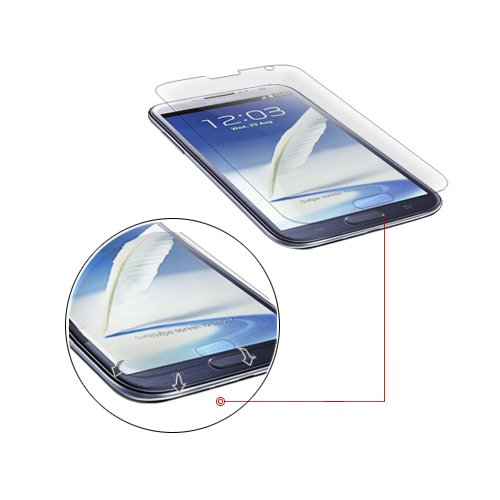
...so that the entire glass, to the phone's frame, is covered/protected. By its being so high-end (and so, then, comparatively expensive), all of the impediments of cheaper protectors (such as, for example, glare, or the illusion of water streaks, or the illusion of blue and green and black oil-on-water-like swirls whenever light hits them at just the right angles) are eliminated. This protector is absolutely crystal clear, and easily mistaken for the glass, itself, at all light angles; and the S-Pen damages it not. If the case one uses somehow interferes with that particular kind of protector, and causes its edges to lift, then there's another one of the exact same quality, by the exact same maker, which just covers the flat part of the screen...
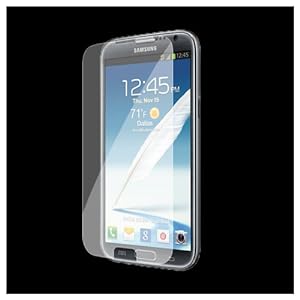
...without trying to mold/cover up and around the curved edges.
Then, my phone is covered with a tight-fitting TPU skin/case like this...
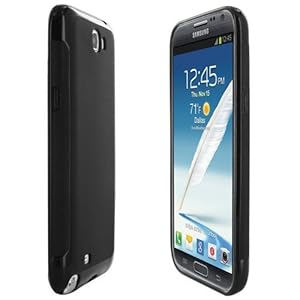
...which, it's worthy of note, completely covers the electromechanical hardware power and volume rocker buttons (in other words, there are no cutouts in the case for those buttons and, instead, the parts of the case that cover the buttons are embossed to clearly show that that's where the buttons are) so that repeated pressing of them over time, doesn't result in body oil and dust and whatever else caking-up inside and eventually making the buttons stick, and cause boot-loops and whatever else, as happens with nearly all Galaxy-family phones if used long enough (too bad there's no way to similarly protect the electromechanical hardware center HOME key)
Finally, if I'm wearing a suit, then I carry the phone on my belt in this black horizontal pouch...
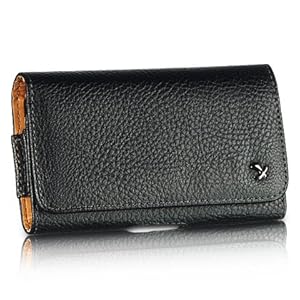
...or if I'm in casual clothes, I carry it in either this brown horizontal pouch...
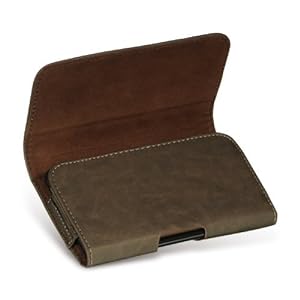
...or this canvas vertical one...

And all for only around forty bucks, as available on Amazon (probably more like $100, if one paid full retail).
Hope that helps!
It's important to not just figure out how to carry the phone, but to do so in a manner that will not expose it to being jostled around in, for example, a purse or briefcase, where it could be damaged by keys and other items; and to also protect the phone from scratches and drops.
Carrying it a pants pocket is always a bad idea. So doing exposes it to being bent and broken when the wearer of said pants sits down. Plus, read on, here, and learn what simple sand in a pocket can do to even Gorilla Glass.
If possible, a thermoplastic polyurethane (TPU) skin/case should be used. The hybrid cases made from multi-layers of polycarbonate and silicone, like the Otterbox Defender...

...or such as the Ballistic...

...are very nice, but are also bulky. Additionally, eventually the silicone gets a little floppy, especially that of it that's on either side of the screen where horizontal swiping and hitting the silicone will eventually stretch it out of shape. TPU doesn't suffer from that infirmity. It remains firm but gummy/bouncy, and will always return to its molded shape, no matter how bent, folded or deformed...

...and so, despite its thinness, it will seriously absorb shock in a drop of the phone to the floor. TPU can be any color, including clear; and can be either glossy or matte (or, as in the image above, both).
Cases made of nothing but silicone, and not even supported by rigid polycarbonate, are the worst of all. They're the dull, not-shiny, really soft ones that phone dealers often give away for free. They eventually always stretch-out and get floppy, and don't really provide any drop protection, to speak of. Be careful when purchasing a TPU case because the sellers often don't really know the difference between silicone and TPU, and will sometimes use the terms interchangeably; or, worse, will say that a case is made of "silicone TPU." Yikes!
Regarding a screen protector: People think that because our Note II screens are made of Dow Corning "Gorilla Glass," they're virtually indestructable. Nothing could be further from the truth. Yes, they're tough... very tough. But they're still just glass. Granted, it's very special glass, made using a process called "ion exchange," which results in the glass being generally stronger for its weight and thickness than regular glass; and the process also causes the surface of the glass to have inordinate scratch resistence. Here's how it's made, and why it's different; from the Corning Glass website:
Ion exchange is a chemical strengthening process where large ions are ?stuffed? into the glass surface, creating a state of compression. Gorilla Glass is specially designed to maximize this behavior. The glass is placed in a hot bath of molten salt at a temperature of approximately 400?C. Smaller sodium ions leave the glass, and larger potassium ions from the salt bath replace them. These larger ions take up more room and are pressed together when the glass cools, producing a layer of compressive stress on the surface of the glass. Gorilla Glass?s special composition enables the potassium ions to diffuse far into the surface, creating high compressive stress deep into the glass. This layer of compression creates a surface that is more resistant to damage from everyday use; and a a deep layer of high compressive stress. This compression acts as a sort of ?armor,? making the glass exceptionally tough and damage resistant.
While that really and truly does make for a superior quality of glass that really is highly -- and I mean highly -- resistant to both scratches and breakage, it's still just glass; and so it can and will break. It's not indestructable; and it is just folly for anyone to be surprised when it breaks, as I so often see in forum postings which characterize Gorilla Glass as "junk" or worse. It is not junk; and it's especially not worse. But it most definitely is just glass, and so it will scratch, and it will break...
...just not very darned easily. When Corning says that Gorilla Glass is scratch resistant, it's not kidding. Gorilla glass has a Vickers hardness test rating of around 670; and so that means that it takes something with a Mohs scale of mineral hardness rating of around 7 or higher to scratch it. That's hard! Things which have a Mohs scale hardness of 7 or higher include quartz, topaz and diamonds. To give it some perspective, using everyday things, the graphite in a typical pencil "lead" has a Mohs hardness of 1.5; a fingernail, 2.2 to 2.5; a copper penny, 3.2 to 3.5; a pocketknife 5.1; a plate glass window, 5.5; and a steel file, 6.5 It takes an unglazedd porcelain streak plate to reach a hardness of 7.0 on the Mohs scale. But here's the thing: Many more things than you realize in your everyday life are that hard... things in your pocket, sometimes. Many kinds of simple sand, for example, as found in one's pocket or purse, contains quartz, and so can easily scratch Gorilla glass. Diamond sandpaper can downright destroy the surface of Gorilla Glass.
And just because Gorilla Glass is tough, don't overestimate it. Tough glass can still break. A tempered glass shower door, for example, will flex; and if you fall in the bathroom against it, it will likely not break. But just take a two-dollar flat-blade screwdriver, and try to pry the shower door from its metal frame such that you accidentaly put only the tiniest little nick in its edge and it will literally explode into thousands of little pieces.
Even Gorilla Glass, then, needs a screen protector... not to keep it from breaking, but, rather, to keep it from sratching. That said, if it breaks, the screen protector can kinda' hold it together a little... but not enough to keep using it for very long, if at all.
A proper screen protector is not just any old kind of polyester or mylar plastic, cut-to-size. It takes no small amount of technology to make Polyester truly optically clear; yet also invisibly layered with anti-glare/anti-reflective substances; all without the weird side-effects seen in cheap plastic screen protectors (glare, distortion, the blue/green/black swirly look that mimics gasoline sitting on water, rows of vertical marks that make it look like there's water beneath the protector, and all manner of other issues). Truly optically-clear screen protectors -- the good ones -- are made from Polyethyleneterephthalate, or "PET," for short. PET is what's called a "long-chain" (referring to its molecular structure) polymer made from precise mixtures of high-grade a dihydric alcohol and terephthalic acid, oxidized to perfection using nearly impossible tolerances. Medical x-ray films are made from such materials; and there cannot be even the slightest artifact in a sheet of medical x-ray film! The precision is demanded, in part, because light travels through polyester differently than it does glass. Light travels through PET film via molecular vibrations and chemical bonds, the atoms of which combine with the the light frequency and electrons in the film to influence its transparency. Sadly, high-quality PET is too soft to be a screen protector, so a layer above and below it must be invisibly laminated to it; and said layer must be sufficiently optically clear that it doesn't undo the perfection of the PET; a chain, after all, is only as strong as its weakest link.

Fortunately, one of the chemicals used to make the outer layers harder also have natural anti-reflective and anti-glare properties; and the chemical added to make the protector resist body and other oils actually enhances the outer layers' clarity so that all the work that went into making the PET layer so optically high-quality isn't wasted. Even the stamping process is sophisticated so that the earlier-referenced long-chian molecular structure will not be harmed by stretching. A seriously high-quality screen protector, then, is no small thing; and necessarily costs more.
My Note II's screen is protected by a high-end, dry-apply, hard, multi-layered, nearly scratch proof, oleophobic, optically crystal clear PET film screen protector specially-made/molded to cover not only right up to the edges of the screen glass, but to also wrap over and around them (which, on a Note II, is tricky because the edges of our screens are beveled/raised/curved)...

...so that the entire glass, to the phone's frame, is covered/protected. By its being so high-end (and so, then, comparatively expensive), all of the impediments of cheaper protectors (such as, for example, glare, or the illusion of water streaks, or the illusion of blue and green and black oil-on-water-like swirls whenever light hits them at just the right angles) are eliminated. This protector is absolutely crystal clear, and easily mistaken for the glass, itself, at all light angles; and the S-Pen damages it not. If the case one uses somehow interferes with that particular kind of protector, and causes its edges to lift, then there's another one of the exact same quality, by the exact same maker, which just covers the flat part of the screen...

...without trying to mold/cover up and around the curved edges.
Then, my phone is covered with a tight-fitting TPU skin/case like this...

...which, it's worthy of note, completely covers the electromechanical hardware power and volume rocker buttons (in other words, there are no cutouts in the case for those buttons and, instead, the parts of the case that cover the buttons are embossed to clearly show that that's where the buttons are) so that repeated pressing of them over time, doesn't result in body oil and dust and whatever else caking-up inside and eventually making the buttons stick, and cause boot-loops and whatever else, as happens with nearly all Galaxy-family phones if used long enough (too bad there's no way to similarly protect the electromechanical hardware center HOME key)
Finally, if I'm wearing a suit, then I carry the phone on my belt in this black horizontal pouch...

...or if I'm in casual clothes, I carry it in either this brown horizontal pouch...

...or this canvas vertical one...
And all for only around forty bucks, as available on Amazon (probably more like $100, if one paid full retail).
Hope that helps!
Last edited:
nancybout
Well-known member
Usually my purse but on the otterbox commuter. . Avon one. . Fits perfect on my shorts and skorts pockets perfect. Granted is on my hand or bag 99%
Sent from my SAMSUNG-SGH-I317 using Tapatalk 2
Sent from my SAMSUNG-SGH-I317 using Tapatalk 2
magneticseed
Member
spagman
Well-known member
I have the ballistic mentioned in the post above... I've had it for 6 months no signs of Silicon becoming flimsy.. Yes it is a little bulky.
Sent from my SAMSUNG-SGH-I317
Sent from my SAMSUNG-SGH-I317
Similar threads
- Replies
- 27
- Views
- 2K
- Replies
- 1
- Views
- 2K
- Replies
- 20
- Views
- 2K
- Replies
- 10
- Views
- 3K
Members online
Total: 3,704 (members: 14, guests: 3,690)
Trending Posts
-
[Chatter] "Where everybody knows your name ..."
- Started by zero neck
- Replies: 53K
-
Question Verizon unlocked, international dual sim
- Started by Michael Palyszeski
- Replies: 1
-
-
-
Question Redmi 12 (5g) disable black screen during calls
- Started by unirockers
- Replies: 0
Forum statistics

Android Central is part of Future plc, an international media group and leading digital publisher. Visit our corporate site.
© Future Publishing Limited Quay House, The Ambury, Bath BA1 1UA. All rights reserved. England and Wales company registration number 2008885.



